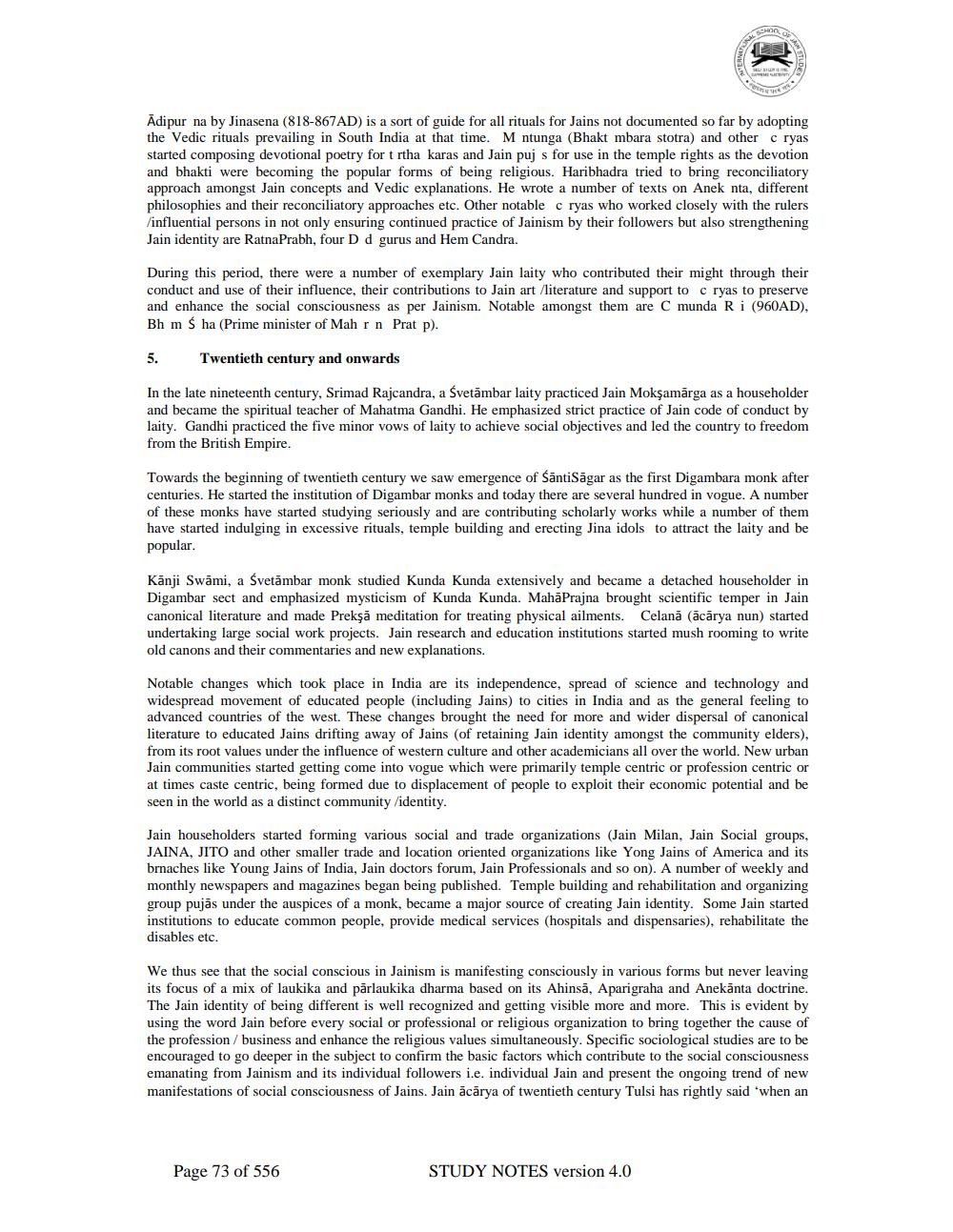________________
Adipur na by Jinasena (818-867AD) is a sort of guide for all rituals for Jains not documented so far by adopting the Vedic rituals prevailing in South India at that time. Mntunga (Bhakt mbara stotra) and other c ryas started composing devotional poetry for t rtha karas and Jain puj s for use in the temple rights as the devotion and bhakti were becoming the popular forms of being religious. Haribhadra tried to bring reconciliatory approach amongst Jain concepts and Vedic explanations. He wrote a number of texts on Anek nta, different philosophies and their reconciliatory approaches etc. Other notable c ryas who worked closely with the rulers /influential persons in not only ensuring continued practice of Jainism by their followers but also strengthening Jain identity are Ratna Prabh, four D d gurus and Hem Candra.
During this period, there were a number of exemplary Jain laity who contributed their might through their conduct and use of their influence, their contributions to Jain art /literature and support to c ryas to preserve and enhance the social consciousness as per Jainism. Notable amongst them are C munda Ri (960AD), Bh m $ ha (Prime minister of Mah r n Prat p).
5.
Twentieth century and onwards
In the late nineteenth century, Srimad Rajcandra, a Svetāmbar laity practiced Jain Mokşamārga as a householder and became the spiritual teacher of Mahatma Gandhi. He emphasized strict practice of Jain code of conduct by laity. Gandhi practiced the five minor vows of laity to achieve social objectives and led the country to freedom from the British Empire.
Towards the beginning of twentieth century we saw emergence of śāntiSāgar as the first Digambara monk after centuries. He started the institution of Digambar monks and today there are several hundred in vogue. A number of these monks have started studying seriously and are contributing scholarly works while a number of them have started indulging in excessive rituals, temple building and erecting Jina idols to attract the laity and be popular.
Kanji Swami, a Svetāmbar monk studied Kunda Kunda extensively and became a detached householder in Digambar sect and emphasized mysticism of Kunda Kunda. MahaPrajna brought scientific temper in Jain canonical literature and made Preksā meditation for treating physical ailments. Celanā (ācārya nun) started undertaking large social work projects. Jain research and education institutions started mushrooming to write old canons and their commentaries and new explanations.
Notable changes which took place in India are its independence, spread of science and technology and widespread movement of educated people (including Jains) to cities in India and as the general feeling to advanced countries of the west. These changes brought the need for more and wider dispersal of canonical literature to educated Jains drifting away of Jains (of retaining Jain identity amongst the community elders), from its root values under the influence of western culture and other academicians all over the world. New urban Jain communities started getting come into vogue which were primarily temple centric or profession centric or at times caste centric, being formed due to displacement of people to exploit their economic potential and be seen in the world as a distinct community/identity.
Jain householders started forming various social and trade organizations (Jain Milan, Jain Social groups, JAINA, JITO and other smaller trade and location oriented organizations like Yong Jains of America and its brnaches like Young Jains of India, Jain doctors forum, Jain Professionals and so on). A number of weekly and monthly newspapers and magazines began being published. Temple building and rehabilitation and organizing group pujās under the auspices of a monk, became a major source of creating Jain identity. Some Jain started institutions to educate common people, provide medical services (hospitals and dispensaries), rehabilitate the disables etc.
We thus see that the social conscious in Jainism is manifesting consciously in various forms but never leaving its focus of a mix of laukika and pārlaukika dharma based on its Ahinsă, Aparigraha and Anekānta doctrine. The Jain identity of being different is well recognized and getting visible more and more. This is evident by using the word Jain before every social or professional or religious organization to bring together the cause of the profession/business and enhance the religious values simultaneously. Specific sociological studies are to be encouraged to go deeper in the subject to confirm the basic factors which contribute to the social consciousness emanating from Jainism and its individual followers i.e. individual Jain and present the ongoing trend of new manifestations of social consciousness of Jains. Jain acārya of twentieth century Tulsi has rightly said 'when an
Page 73 of 556
STUDY NOTES version 4.0




